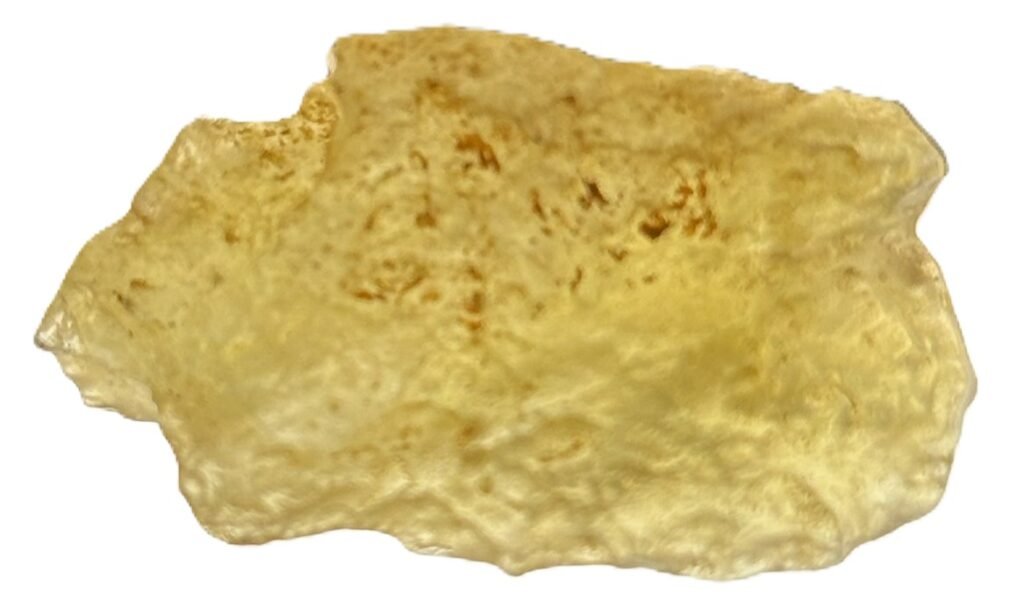
Libyan Desert Glass, a mesmerising natural glass found scattered across the Libyan Desert, holds a unique allure. Its smooth, often translucent appearance, ranging from pale green to golden yellow, hints at a dramatic and mysterious origin. This article explores the origins of Libyan Desert Glass, its composition, where it is found, historical uses, folklore, and its connections to astrology and the chakra system.
Origins and Composition
The most widely accepted theory for the formation of Libyan Desert Glass is that it is created by the immense heat of meteorite impacts. When a large meteorite strikes the Earth, the energy released melts the surface sand, creating a molten glass that cools and solidifies. This process explains why Libyan Desert Glass is often found in strewn fields surrounding impact craters. Other, less common, theories suggest formation through intense heat from airbursts of meteors or even from extremely hot volcanic eruptions.
Libyan Desert Glass is primarily composed of pure silica, which is the main component of sand. Trace elements and impurities within the sand give the glass its characteristic colour variations. The presence of these impurities can also sometimes create subtle patterns or inclusions within the glass.
Locations
Desert Glass is found in several desert regions around the world, particularly those with evidence of past meteorite impacts. One of the most famous locations is the Libyan Desert, where large quantities of Libyan Desert Glass are found. This glass is known for its beautiful golden-yellow colour and translucence. Other locations of desert glass include parts of Chile, Argentina, and various desert regions in North America.
The specific type of desert glass found in each location can vary slightly in colour and texture depending on the composition of the local sand and the intensity of the impact event.
Archaeological Finds and Historical Records
Libyan Desert Glass has a fascinating archaeological record. It was used by ancient Egyptians for tools, jewellery, and even ceremonial objects. A stunning example of this is a scarab beetle carved from Libyan Desert Glass that was found in Tutankhamun’s tomb. This demonstrates the stone’s value and significance to ancient cultures.
While other types of desert glass may not have the same extensive archaeological record, their presence in certain regions suggests that they were known and used by indigenous peoples. However, specific historical references and detailed records of use are often limited.
Folklore, Legends, and Tales
Libyan Desert Glass, particularly Libyan Desert Glass, has accumulated a certain mystique over time. Its association with meteorite impacts and the vast, desolate landscapes where it is found has led to various legends and beliefs. Some cultures have associated it with celestial energy, believing it to be a gift from the stars.
Due to its formation from intense heat, some believe Libyan Desert Glass carries the energy of transformation and rebirth. It is also sometimes associated with protection, as the hardened glass is seen as a shield against negative energies. The golden colour of Libyan Desert Glass has also linked it to solar energy and prosperity in some interpretations.
Links with Astrology and the Chakra System
Libyan Desert Glass, especially the golden variety, is often associated with the Sun in astrology, reflecting its connection to solar energy and the life-giving properties of the sun. The Sun represents vitality, creativity, and self-expression. Its connection to fire and transformation could also link it to Mars.
In the chakra system, Libyan Desert Glass is commonly associated with the solar plexus chakra (Manipura). This chakra is in the upper abdomen and is associated with personal power, will, and self-confidence. Libyan Desert Glass can help to strengthen the solar plexus chakra, promoting feelings of self-worth and empowerment.
It is also sometimes associated with the sacral chakra (Svadhisthana), which is in the lower abdomen and is associated with creativity, passion, and sexuality. The fiery energy of Libyan Desert Glass can ignite these creative and passionate aspects of oneself. Its connection to higher realms can sometimes lead to an association with the crown chakra as well.
